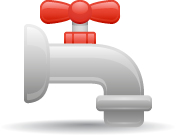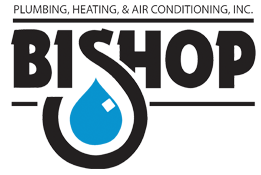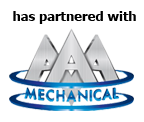Why Maintain Your Equipment?
 Sometimes it may feel that keeping up on maintenance of a home can be a full-time job because it takes so much time to keep systems in the home running smoothly, let alone the time it takes to do routine household chores. Plumbing is one of many systems that need routine maintenance during the year. Here are some simple steps that you can do yourself to help maintain your plumbing system. Proper maintenance over years can save you time and unnecessary expense and sometimes accidents, such as pipe breaks. Proper maintenance helps prevent expensive repairs, your equipment’s lifetime will be extended and you may enjoy significant reductions in monthly utility bills. Keeping your plumbing properly serviced is a great investment to protect your investment in your home.
Sometimes it may feel that keeping up on maintenance of a home can be a full-time job because it takes so much time to keep systems in the home running smoothly, let alone the time it takes to do routine household chores. Plumbing is one of many systems that need routine maintenance during the year. Here are some simple steps that you can do yourself to help maintain your plumbing system. Proper maintenance over years can save you time and unnecessary expense and sometimes accidents, such as pipe breaks. Proper maintenance helps prevent expensive repairs, your equipment’s lifetime will be extended and you may enjoy significant reductions in monthly utility bills. Keeping your plumbing properly serviced is a great investment to protect your investment in your home.
When thinking about your plumbing system, you need to first realize the number of appliances and pipes that are included in the system. This doesn’t only cover the plumbing system that operates toilets, sinks, showers, and bathtubs in your home, it also covers laundry facilities in your home for your washer, utility sinks, and drains that may be installed. Look for signs of leaks in exposed pipes, where pipes run through the walls or the foundation of your home.
- Check for signs of a leak which include puddles of water and watermarks. Look for signs of corrosion. Corrosion of pipes can cause leaks and bad pipe connections if not corrected. A sign of corrosion is green stains around brass and copper fittings and on shutoff valves.
- Test water pressure. Water pressure is with how much force the water comes out of sink faucets and showerheads. Low water pressure can be a sign of sediment build up in the faucet or shower head. It may also be a sign of a problem with the water line.
- Remove the showerhead to look for any sediment that may have collected in it. This may be a cause of lower water pressure.
- Check each sink, shower and tub drain for the speed of drainage. Slow drainage usually indicates a clog in the drain or a blocked vent pipe. Your drains should have a full swirl when draining. If bubbles appear when water is draining, this is usually a sign of a problem.
- Check the flushing handle and inside parts of the toilets. Flush each toilet to make sure that it is flushing properly. Check the parts inside the tank of the toilet to see if any parts are broken, rusted, or missing. Make sure the toilet water does not continue to run after flushing and make sure there is no sign of water on the floor around the toilet.
- Look for cracked tiles in the shower, around sinks, or near water pipes in the home. Loose or hollow tiles can be an indication that there is, or was, a leak that has caused rotting underneath or behind the tile. See if tub, sink or toilet caulking is coming off. Check for mildew, which is caused by standing water that may have dried up again.
- Push and pull on each toilet to see if it rocks or moves.
- Look inside the burner chamber of the home’s water heater. See if there are any flakes of rust inside of the chamber. Also, check the flame of the water heater, which should be a blue color with no signs of yellow in the flame. If you see a yellow color, this may mean that the jets need to be cleaned. You should drain the water heater to remove sediment that may have built up in it.
- Turn on all of the faucets in your home to see if there is any water coming out of the handles and valves. Check the washing machine hoses to make sure that there aren’t any cracks and that the hoses are not brittle or leaking.
- Air conditioning and heating system. As much as half of your energy used in your home goes to heating and cooling. We have planned service agreements that can be customized to your heating and cooling systems. Please click here for more information.
By running through this checklist on an annual or bi-annual basis, you can check your home for plumbing problems or potential plumbing problems. Addressing these problems on a regular basis can help you to prevent the problems from becoming worse, which can save you quite a bit of money on the long run. Taking a few minutes to inspect your plumbing system is time well spent.

